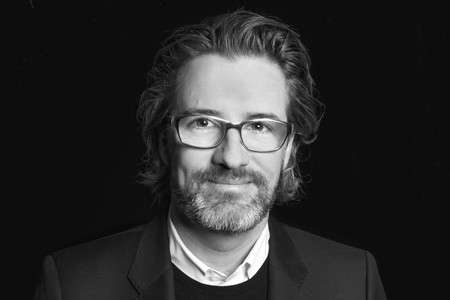Mondo Novo: optical views and Olafur Eliasson
From Dicember 19th, 2014 to April 26th, 2015
Espace Louis Vuitton Venice
Calle del Ridotto, 1353 Venice
_
 Following the dialogue between ages of Tony Oursler and Pompeo Molmenti in Where Should Othello Go?, the comparison between Bill Viola and Vittore Carpaccio in Renaissance and the Venetian perspectives in comparison by Mariano Fortuny and Jiro Taniguchi for Sguardi incrociati a Venezia, Espace Louis Vuitton Venice presents a new exhibition, Mondo Novo: optical views & Olafur Eliasson.
Following the dialogue between ages of Tony Oursler and Pompeo Molmenti in Where Should Othello Go?, the comparison between Bill Viola and Vittore Carpaccio in Renaissance and the Venetian perspectives in comparison by Mariano Fortuny and Jiro Taniguchi for Sguardi incrociati a Venezia, Espace Louis Vuitton Venice presents a new exhibition, Mondo Novo: optical views & Olafur Eliasson.
Curated by film critic and collector Carlo Montanaro, this exhibition returns the enlightened invention of the “mondo novo” (a device considered the ancestor of cinema) to the general public, created to turn the “vue d’optique” into a show; etchings in numerous copies taken from important works by Marieschi, Canaletto and other famous engravers (ten of which from the Museo Correr collection) have been restored by Louis Vuitton in partnership with the MUVE Foundation.
The machine, nicknamed “mondo novo” by Carlo Goldoni, is an eighteenth century creation also known as phantoscope, an ancestor of the projector used as spectacular entertainment during traditional and religious holidays. Unlike the magic lantern, which – when used in the dark, thanks to the play of lights – gave life to stained glass, the Mondo Novo also worked outdoors, in daylight. The projector was a real peculiarity of the time, portrayed by countless artists. Famous is the “Mondo Novo” fresco by Giandomenico Tiepolo, today at Ca ‘Rezzonico, which perfectly evidences eighteenth century’s popular amusements.
The very rare and delicate views – made by Remondini typography – and the vision box, part of the Museo Correr collection, will dialogue with the kaleidoscope imagined by Danish artist Olafur Eliasson: Your Star House, 2011; a fascinating contemporary reinterpretation of the optical treasures of the XVIII Century.
The work consists of three large and irregular glass panels, leaning one against the other and supported by a structure, recreating a kaleidoscope effect. The mirrors infinitesimally multiply a triangular opening at the end of the work, adding the design of a star in the centre of the installation to the kaleidoscopic reflection. The observer cannot immediately guess which parts of the surrounding environment are visible. Only the star, located in the heart of the installation, remains still, increasing and decreasing in scale depending on the person’s approach or move away from the installation itself.
“When looking through a kaleidoscope, it is as if the view opens and goes in all directions. What I find fascinating in kaleidoscopes is that they are composed. I called the first kaleidoscope I built “Your compound eye” (1996). The idea took cue from fly’s eyes, they have the ability of a 360° view. A set of composed images and not just one clear image” said Olafur Eliasson.
Olafur Eliasson
Born in 1967 in Denmark, he lives and works between Copenhagen and Berlin and participates to international exhibitions since 1997.
In 2003, he represented Denmark at the 50th Venice Biennale, that same year he completed The weather project installation, on display at London’s Tate Modern. Eliasson’s works exhibited in public places include the Green River, on display at various locations between 1998 and 2001 and the Serpentine Gallery Pavilion in 2007, designed in collaboration with Kjetil Thorsen. The New York City Waterfalls, commissioned by the Public Art Fund, have been installed in the summer of 2008 on the shoreline of Manhattan and Brooklyn. 2011 saw the presentation of the work Your rainbow panorama, a circular 150 meters long walkway composed of coloured glass panels, positioned on the roof of the ARoS Museum in Aarhus, Denmark. That same year saw the inauguration of the Harpa Reykjavik Concert Hall and Conference Centre, for which Eliasson designed the facade in collaboration with Danish architectural firm Henning Larsen, winning the European Union prize for Contemporary Architecture Mies van der Rohe in 2013. In collaboration with engineer Frederik Ottesen, Eliasson developed Little Sun, a small lamp designed to work in areas of the world with no electricity. The launch of Little Sun took place at the Tate Modern Museum for 2012 London Festival and was later introduced worldwide.
For his first solo exhibition at the Danish Louisiana Museum of Modern Art, still currently on display, the artist has filled an entire wing with stones and water to emulate a winding river flowing through the rocks. A new series of paintings by Eliasson, in response to the work of J.M.W. Turner, are on display at the Tate Britain in London, coinciding with the museum’s biggest Autumn show; The EY Exhibition: Late Turner – Painting Set Free.
Carlo Montanaro
Film critic and collector, he was born in Burano (Venice) in 1946. He writes about films and photography for various magazines and publications, working professionally in the movie and TV fields. He also collaborates in the organization of festivals and shows. With schools and public and private institutions, he organises courses on the history of Cinema and Directing, using the materials collected in his own Archive which has become, since 24th March 2010, the Carlo Montanaro Cultural Association Archive. Re-elected in 2006 as Director of the Academy of Fine Arts in Venice, he retired in November 2010; from 1998 to 2011 he taught at the Faculty of Arts of the Ca ‘Foscari University.